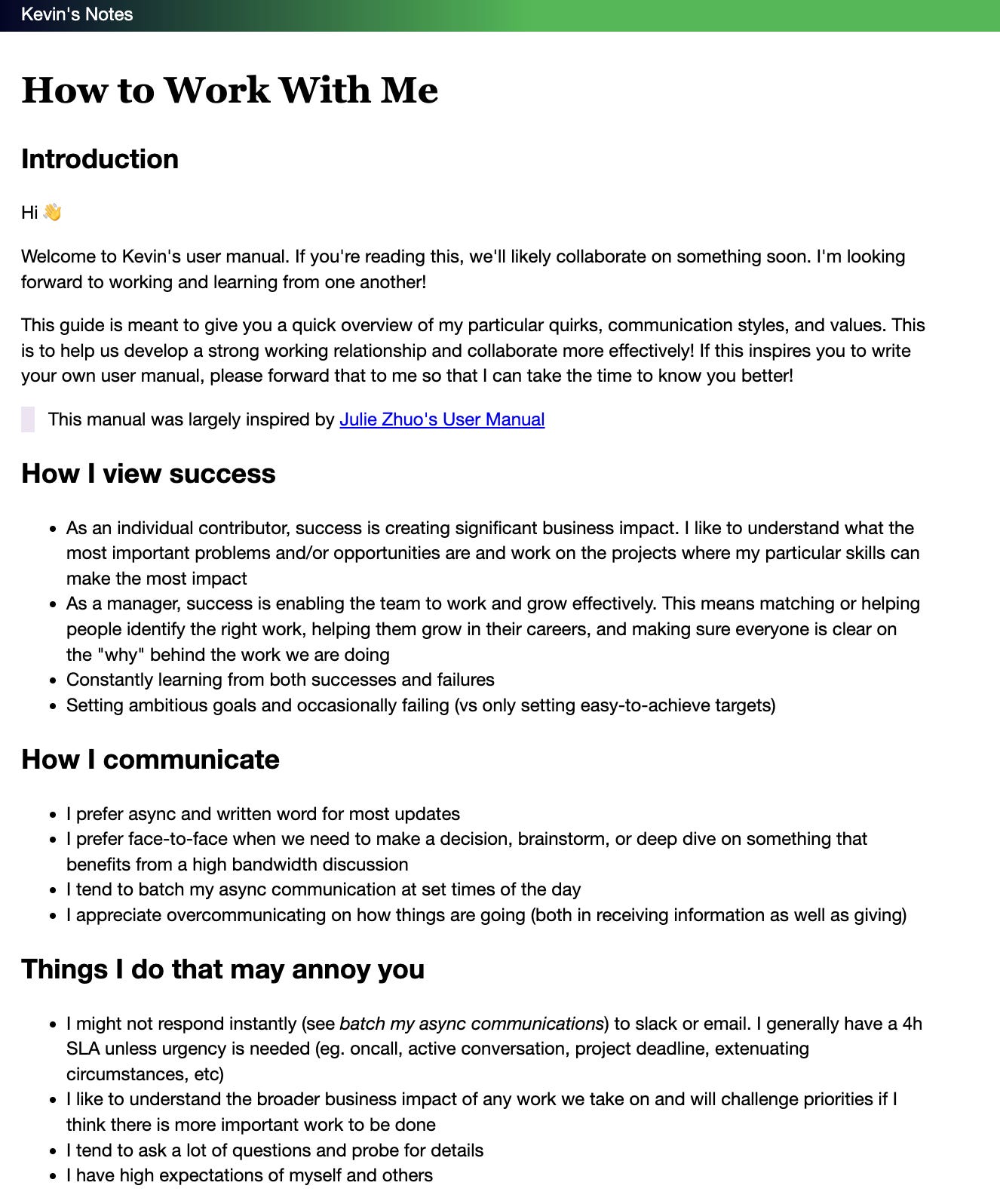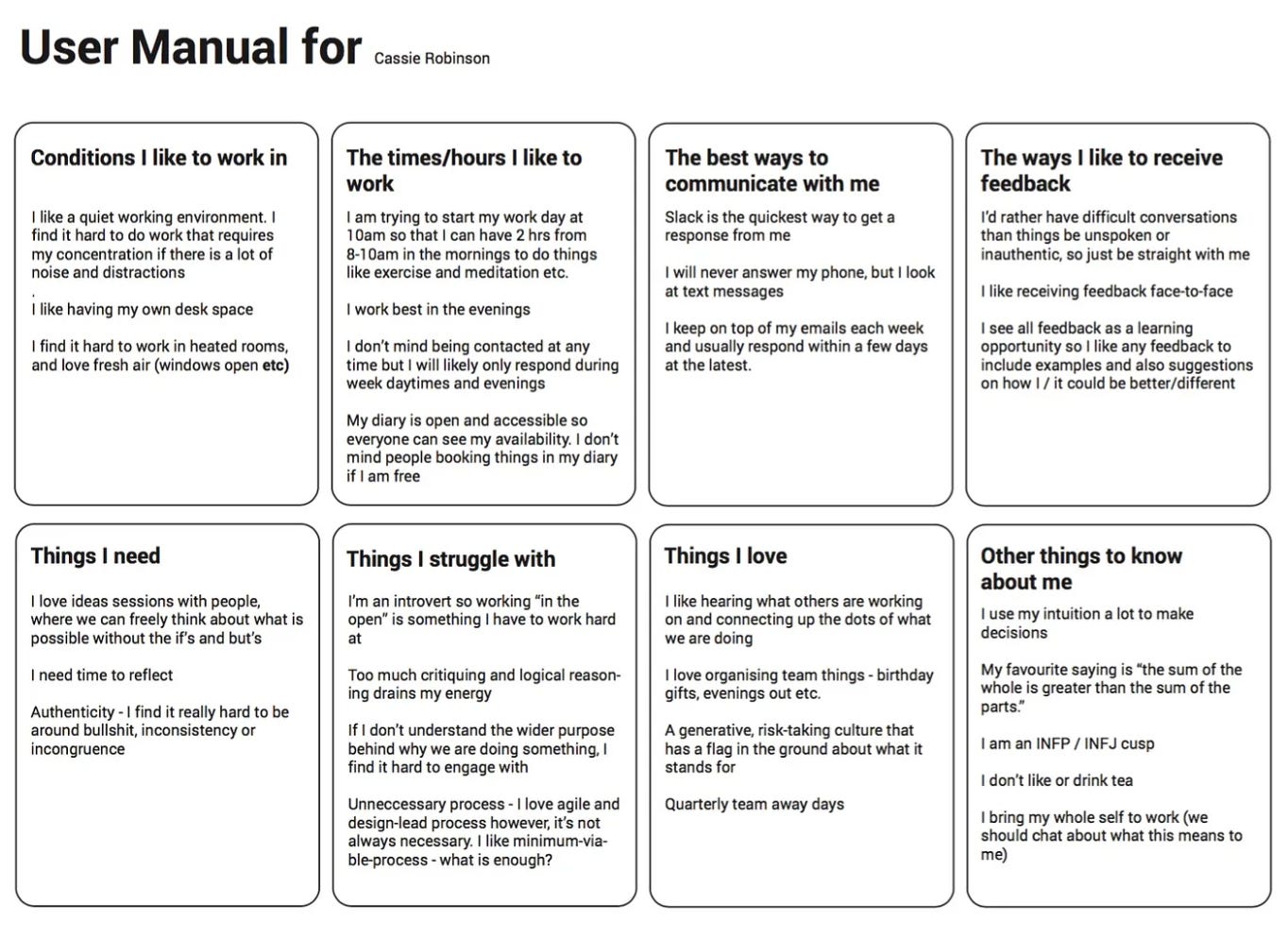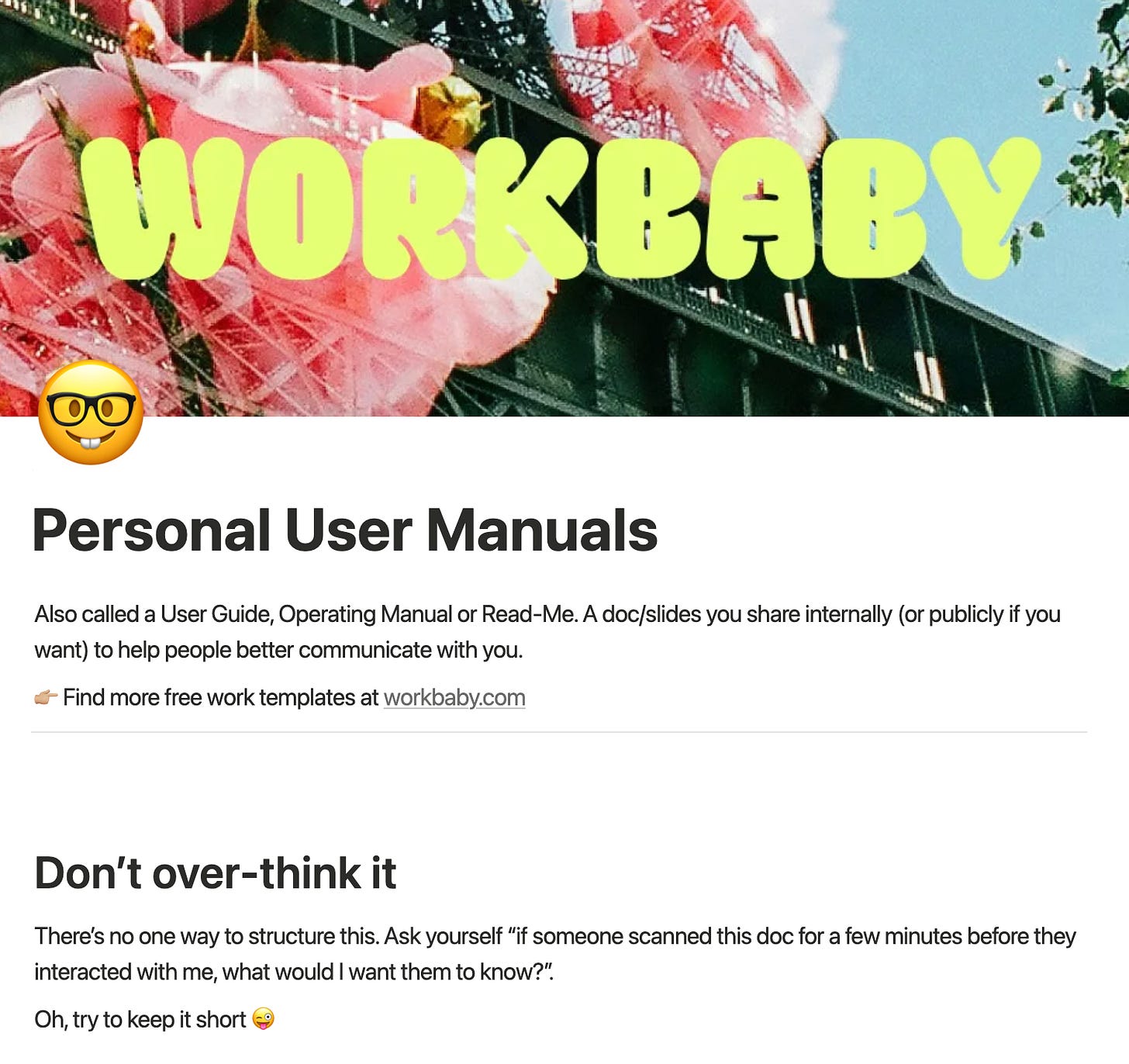Two types of communication at work (we only do one)
User manuals sound a bit lame. Until you see what happens when a team actually uses them.
There’s two types of communication at work. We mostly only do one of them:
Communicating about work
Communicating about how we communicate
Spending time on number two is very unlocking.
Communicating about how we communicate
You’ll see this show up in your work in two ways:
1. In the moment
Setting the frame or context before you dive in. Here’s what I’m going to do, now this is me doing it.
Example: In a meeting “We’ve got 15mins together, I’m going walk you though 1,2,3, interrupt me with questions as we go”. In a doc, it’s the little “How to use this doc” section you sometimes see at the top.
2. In the relationship
Creating space or dedicated sessions to talk about how you work with the people you interact with a lot.
Example: Things like How We Work sessions, deeper repair/reset style 1:1s, and personal user manuals.
Thousands of people downloaded that How We Work guide and the number one question I got back was “Can I run this as a group thing?”.
Short answer: for sure.
For my own team though, I liked adapting it using user manuals, because they gave us something concrete to share live and build team norms around (a lot of the prompts are the same).
What’s a Personal User Manual?
You’ve probably seen these popping up – “how to work with me” docs, operating manuals, read-mes. The idea is: if you want people to communicate with you in a better way, show them what “better” looks like.
It’s usually a short doc or set of slides you share with people you work with. If someone scanned it for a few minutes before a meeting with you, they’d have a much better sense of how to work with you.
They can feel a bit self-indulgent, but they’re also really useful when working across countries or with departments you’ve never collaborated with before (I found them helpful when working with Eng for example).
What makes them work (and not):
The point isn’t to tell people how they must work with you or for everyone to make a 10-page manual.
The value is in reading each other’s manuals, learning how people are different, and flexing your style a little.
They’re especially helpful when leaders and senior people have them, because it can feel daunting to communicate with them and some guidance lowers the barrier (esp for more junior levels).
Used well, they take away some of the guesswork and friction in how we interact. Used badly, they become another “me first” document that nobody looks at.
Inspiration:
I’ve been collecting examples that people publish publicly and put together a simple guide you can use. This is also an excellent post by ex-Facebook design lead Julie.
I kinda love the “Things I do that may annoy you” section in Kevin’s:

IMO they work best as a team ritual
Where user manuals shine is as a team activity, not as solo documents sitting in a folder somewhere.
Here’s a session I used to love running with my team (usually ~90 mins).
1. Before the session
Explain the ‘why’ of the session and how user manuals help.
Ask everyone to make one, give some guidance and what that can look like
One page / handful of slides is enough
2. In the session (live sharing)
Each person takes about 10 minutes to walk through their manual.
Creates a safer space for people to share things they don’t usually say out loud, and helps everyone understand the “why” behind each other’s behaviour.
Practical stuff comes out too like “What’s the best way to get your attention if something’s urgent?” or “Are there times when you’d rather I didn’t desk pop-in?”
3. Then you can move into how you work as a team
We’d often then talk about team norms and build out a light doc.
Everything from expectations on response times, how we share feedback, how we say “no”, what “urgent” actually means, whether it’s okay to decline meetings, whether it’s okay to have a haircut during work hours (yes), etc.
And energy mapping with calendars.
Best time for big team meetings, 1:1s, focus time, school pick‑ups, proper breaks etc. Not trying to engineer the perfect schedule, just trying to get a bit more honest about how everyone works so the rhythm of the team feels easier.
Let’s crowdsource this 💌
What have you seen work (or do you do) as a team exercise or offsite to build psychological safety and better communication? I’ll pull the best ideas into a future newsletter so we can all steal them and help each other.
Love Soph x
PS - If you want to get a lil’ crazy… Manager Feedback GPTs
Here’s an example of someone uploading their boss’s user manual (plus other stuff) to ChatGPT and getting it to be their first round of feedback before taking work to the real person. If anyone’s tried this please LMK!





